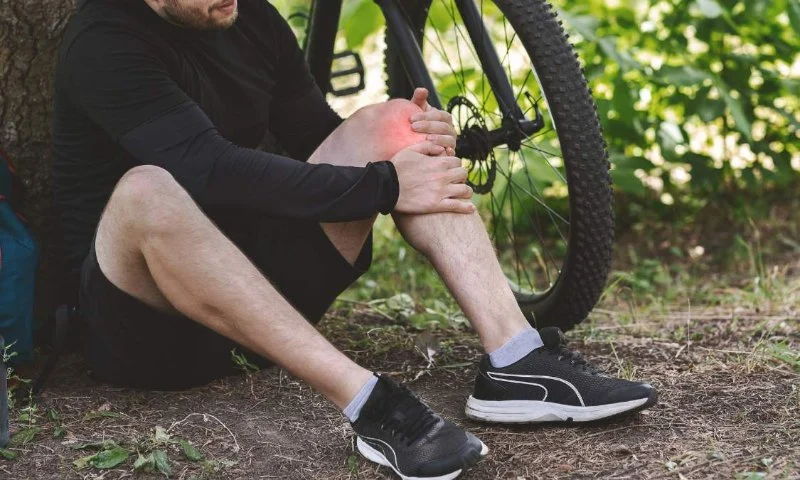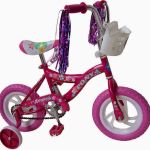
5 Common Causes of Knee Pain While Cycling
- 1 - Improper Bike Fit
- 2 - Incorrect Cycling Technique
- 3 - Overuse or Lack of Recovery
- 4 - Muscle Imbalances
- 5 - Poor Bike Positioning
1. Improper Bike Fit
One of the most common causes of knee pain while cycling is an improper bike fit. If your bike is not properly adjusted to your body, it can lead to strain on the knees. For example, a saddle that is too high or too low can affect your pedaling mechanics, causing unnecessary stress on your knees.
To avoid knee pain caused by bike fit, it’s essential to get a professional bike fitting. A trained expert can adjust the saddle height, handlebar position, and pedal alignment to ensure that your bike is set up to optimize your comfort and performance. This is especially important if you're experiencing knee pain that worsens with cycling.
2. Incorrect Cycling Technique
Improper cycling technique can also lead to knee pain. Common mistakes include pushing too hard on the pedals or using a gear that is too heavy. This forces your knees to work harder than they need to, resulting in strain and potential injury.
One key aspect of proper technique is maintaining a smooth pedal stroke. It’s important to engage the whole leg when cycling, not just the quadriceps, to avoid overloading the knee. If you're new to cycling or recovering from knee pain, start with a lower gear and increase the resistance gradually. Additionally, make sure to pedal in smooth, circular motions rather than just pushing down hard.
3. Overuse or Lack of Recovery
Overuse is another major contributor to knee pain while cycling. Cycling too frequently without adequate rest and recovery can strain the knee joints, muscles, and tendons. Over time, this can lead to chronic knee pain or conditions like patellar tendinitis.
To prevent overuse injuries, it’s important to allow time for recovery. Aim for rest days between intense rides, and be mindful of how your body feels. If you notice any discomfort or pain, take a break and give your knees the time they need to recover. Also, vary your workouts to include strength training and flexibility exercises that help support knee health.
4. Muscle Imbalances
Another common cause of knee pain is muscle imbalances. When certain muscles in the leg are stronger or weaker than others, it can affect the way your knees move during cycling. For example, weak hamstrings or glutes can cause the quadriceps to overcompensate, leading to added pressure on the knees.
To avoid muscle imbalances, incorporate strength training exercises into your routine. Focus on building strength in the hamstrings, glutes, and core, as these muscles play an important role in stabilizing the knee joint. Regular stretching and mobility work will also help to maintain balance and prevent tightness that can affect your form while cycling.
5. Poor Bike Positioning
Finally, poor bike positioning can contribute to knee pain while cycling. If the position of your saddle, handlebars, or pedals is off, it can change the way your knees track during each pedal stroke. This misalignment can cause unnecessary wear and tear on your knees over time.
To fix this, ensure that your bike's components are properly positioned. The saddle should be level and positioned at the correct height, and your pedals should align with your hips and knees during pedaling. This alignment will help your knees move in the correct direction, reducing the risk of pain or injury.
For personalized advice on bike fitting and cycling gear, visit Cycling Guider. We offer expert recommendations to ensure you're cycling comfortably and safely, minimizing the risk of knee pain and other injuries.







 Billet BMX5.0 (2 reviews)
Billet BMX5.0 (2 reviews) Far East Children Bicycle Factory1.0 (1 reviews)
Far East Children Bicycle Factory1.0 (1 reviews) Archer Motorsports, Inc.4.0 (8 reviews)
Archer Motorsports, Inc.4.0 (8 reviews) YEP Bike Works4.0 (55 reviews)
YEP Bike Works4.0 (55 reviews) Gorham Bike & Ski4.0 (498 reviews)
Gorham Bike & Ski4.0 (498 reviews) Alchemy Bikes4.0 (37 reviews)
Alchemy Bikes4.0 (37 reviews) How to Teach Kids to Ride a Bike: A Step-by-Step Guide for Parents
How to Teach Kids to Ride a Bike: A Step-by-Step Guide for Parents Tips for Riding on Busy City Streets: Smart Strategies for Urban Cyclists
Tips for Riding on Busy City Streets: Smart Strategies for Urban Cyclists Best US National Parks for Mountain Biking: Ride Epic Trails Across America
Best US National Parks for Mountain Biking: Ride Epic Trails Across America Best Aero Helmets for Time Trials and Racing
Best Aero Helmets for Time Trials and Racing How to Clean and Lubricate Your Bike Chain Like a Pro
How to Clean and Lubricate Your Bike Chain Like a Pro 10 Must-Have Items for Long-Distance Cycling Trips
10 Must-Have Items for Long-Distance Cycling Trips